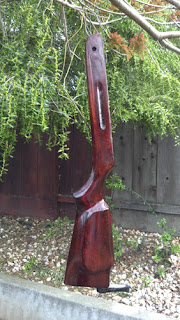Let me show you my progress shots.
Again with the "forgetting to take a before shot". Let us think of a simple strip of veg-tanned leather. Vegetable-tanned leather is best for tooling and dyeing as it won't self-heal and is extremely porous.
The acanthus design here was hand-drawn with a pencil.
The first photo here is of the first step in the tooling process, making your lines permanent. I cut my lines into the leather face with a swivel knife. A swivel knife works like a calligraphy pen, but with a rotating barrel to get tight curves. It's also imperative to keep your leather moist, lest your knife drag and mar the face.
The next step is the tooling- using the various stamps to create texture and depth. This is the point where you'll know if the design will work as a leather project. I was originally impressed with the illustration, but tooling it made it come alive. The first step in tooling is edging the main body of the project. Tooling leather is similar to sculpting. Yu need to analyze what will go where, and your depth of tooling to determine what needs to be raised and what needs to be lowered to have the most visually pleasant image possible.
This image shows my having laid the dye into the leather. Notice how the acanthus leaf is lighter than the main background? I used a resist on that area to avoid it soaking in the dye as readily as other areas. Resists can be tricky- touch the wrong area and that resist is never coming out. EVER. At the very least, dye can be covered with color to lighten it up... as you will see next.
I used leather paint to accent some of the acanthus leaf edges. It pops so much more now. I also laid in the sealant to finish the piece, hence the shiny, glimmery bits.
And here's the final piece in its rightful place. It adds a bit of simple, understated detail to the rifle, and I'm quite proud of it. As I get more involved, I'm sure my gun will evolve as well. I will keep you updated.











